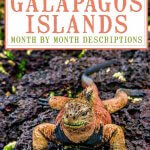If you are wondering when to visit Galapagos, well the answer is easy because there is actually no real best time to visit Galapagos Islands. You can visit the islands all year round. They are on the equator, so there isn’t a great deal of variation in temperature, and there is always something incredible to see.
However, winds, rain and wildlife can vary at different times of the year, and currents can create different micro climates for the different islands, so it is worth knowing what to expect throughout the year.
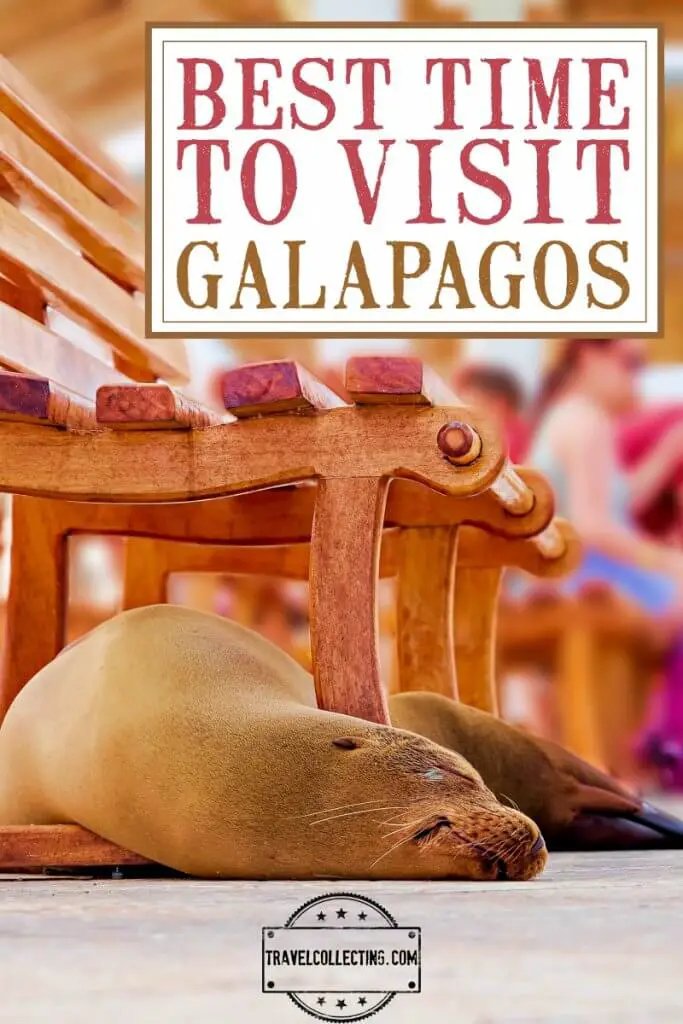
Subscribe to regular updates with tips for planning, travel inspiration and trip ideas and get instant access to the free PDF of this
Best Time to Visit Galapagos Islands
Plan your Galapagos Trip:
- Complete Guide to Planning your Trip to the Galapagos Islands
- How to Choose the Best Way to See the Galapagos Islands
- How to Get To and Around the Galapagos Islands
- Where to Stay in the Galapagos Islands
- Recommended Galapagos Activities
When is the Best Time to Go to the Galapagos?
Let’s take a look.
There are two main seasons in the Galapagos:
DECEMBER – MAY: Warm and Wet*
* This is usually considered the best time to visit the Galapagos
Peak Season
Mid-December to mid-January. This is mainly due to common holiday periods, and is not necessarily the best time of year to visit Galapagos (though you will still love it if you go then).
Water Temperature
Warm. Average 76°F/ 25°C
Air Temperature
Warm. Average low 72°F/ 22°C | average high 86°F/30°C
Seas
Tend to be calmer. Winds are weaker and underwater visibility is better.
Rain/ Sun
Wetter. It often rains for a short period of time each day, with the rest of the day sunny. Although this is the rainy season, it is actually also the sunniest. March is wettest month with average 2 inches.
Vegetation
Green; flowers in bloom
Wildlife Highlights
December: Giant tortoise eggs hatching; Waved albatross chicks start to leave the nest; Sea lions and fur sea lions start mating; Green sea turtles are mating.
January: Giant tortoise eggs hatching; Green Sea Turtles laying eggs (Santa Cruz, North Seymour, Fernandina). Maybe the best time to travel to Galapagos Islands to see giant tortoises in the lowlands. Marine iguanas start to change to bright colors for the mating season.
February: Penguins migrate between Bartolome and Isabela & Fernandina; Marine iguanas nesting on Santa Cruz; Flamingos start nesting; Galapagos doves are mating.
March: Frigate birds mating on San Cristobal and Genovesa; Marine iguanas nesting on North Seymour and Fernandina
April: Waved albatrosses migrate to Espanola and start nesting and their courtship rituals; Frigate birds perform their mating rituals; Sea turtles, marine iguanas and land iguanas are nesting
May: Blue-footed boobies mating (North Seymour, Espanola and Isabela, plus some other islands); Waved albatrosses lay eggs on Espanola; green sea turtles hatching at Gardner Bay, Punta Cormorant and Puerto Egas. The best time to go to the Galapagos for the famous blue-footed boobies’ mating dance.
Best For
- Calm seas = less chance of seasickness, so this is the best time for Galapagos cruises.
- Colorful vegetation
- Warmer seas = can snorkel comfortably without a wetsuit
- Breeding season = best time of year to go to Galapagos to see lots of babies (March and April)
- Schools of hammerhead sharks and most other sharks
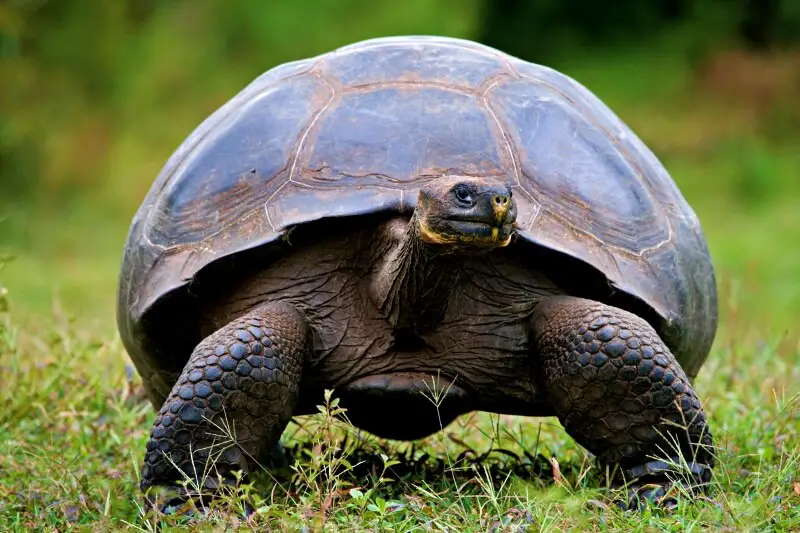
JUNE – NOVEMBER: Cool and Dry(er)
Peak Season
Mid-June to early September.
Water Temperature
Cool. Average 72°F/2 2°C
Air Temperature
Cool. Average low 66°F/ 19°C | average high 79°F/26°C
Seas
Tend to be rougher, with stronger winds. July – August have strongest winds.
Rain/ Sun
Drier. Garua (mist) and clouds are common.
Vegetation
Browner
Wildlife Highlights
June: Waved albatrosses nesting on Espanola; Humpback whales can be seen; Whale sharks start near Wolf and Darwin Islands; Giant tortoises migrate to lowlands to nest (most islands, but especially Santa Cruz); Blue-footed boobies still performing their mating dance (North Seymour is a good spot to see them); Green sea turtles still hatching on Gardner Bay, Punta Cormorant and Puerto Egas. Possibly the best time to travel to Galapagos for whales and whale sharks.
July: Blue-footed boobies and flightless cormorants nesting (Fernandina); Sea lion breeding season; Lava lizards start their mating rituals; dolphins and whales can be seen off Isabela Island’s west coast.
August: Sea lions give birth; Giant tortoises return to the highlands after laying eggs; Sea lions start giving birth; Nazca boobies are nesting; Galapagos hawks start courting.
September: Penguins courtships on Bartolome; Sea lion pups can be seen
October: Blue-footed booby chicks on Isabela and Espanola; Galapagos fur sea lions mating season; Lava herons start building their nests.
November: Green sea turtles mating season; Whale sharks near Darwin and Wolf Islands; Storm petrels nesting on Genovesa; Brown noddies start breeding.
Best For
- More marine life = best time to visit Galapagos for diving and snorkeling
- Breeding season = best time to see whales in Galapagos (and whale sharks) and mola mola (sunfish)
- Cooler weather and more fish = more seabirds e.g. albatrosses and the best time to see penguins in Galapagos
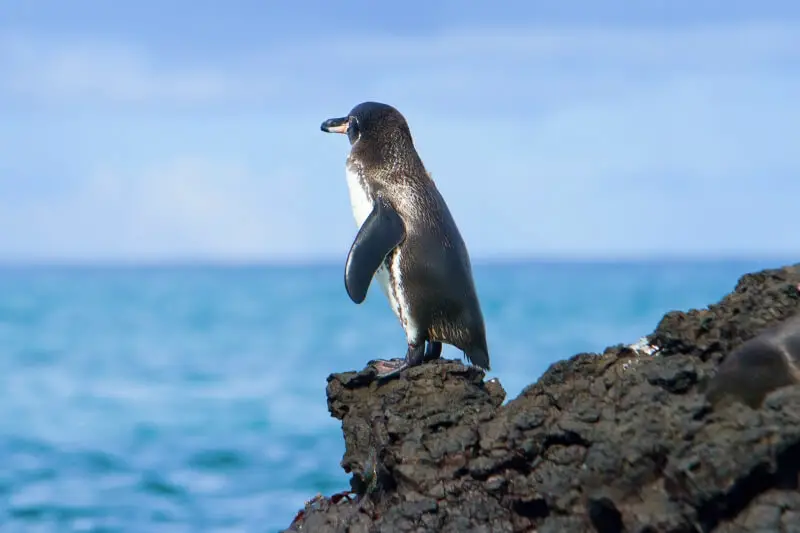
Conclusion
I was recommended by a Galapagos veteran to go in either May or November, with November being the best time to travel Galapagos, despite rougher seas. However, there really is no best time to go to Galapagos Islands. Take a look at all of the information above and take your pick.
Subscribe to regular updates with tips for planning, travel inspiration and trip ideas and get instant access to the free PDF of this
Best Time to Visit Galapagos Islands
Have an amazing trip!
Do you have any other tips for visiting the Galapagos Islands? I’d love to hear them. Comment below.
If you found this post helpful, please share the love and Pin it to your Galapagos board!
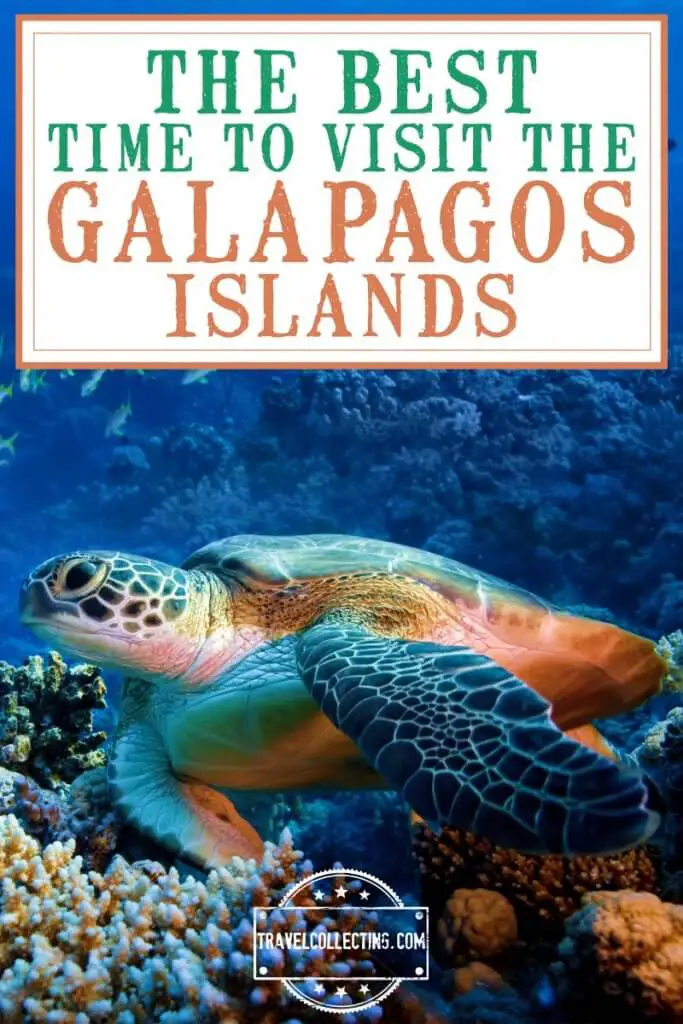
Read other Galapagos posts:
- Complete Guide to Planning your Trip to the Galapagos Islands
- How to Choose the Best Way to See the Galapagos Islands
- How to Get To and Around the Galapagos Islands
- Where to Stay in the Galapagos Islands
- Recommended Galapagos Activities
About the author

James Ian has traveled to 83 countries and all 7 continents. He is passionate about experiential travel, i.e. meaningful travel that actively engages with the environment and culture. He helps people have similar experiences that involve active participation in activities and festivals; engaging with the local food and handicrafts through lessons and food tours; and interacting positively with environment by hiking, riding, rowing, diving and low/no impact animal encounters.
Travel Collecting is a participant in the Amazon.com Services LLC Associates Program, an affiliate advertising program designed to provide a means for sites to earn advertising fees by advertising and linking to amazon.com. Amazon and the Amazon logo are trademarks of Amazon.com, Inc. or its affiliates.

